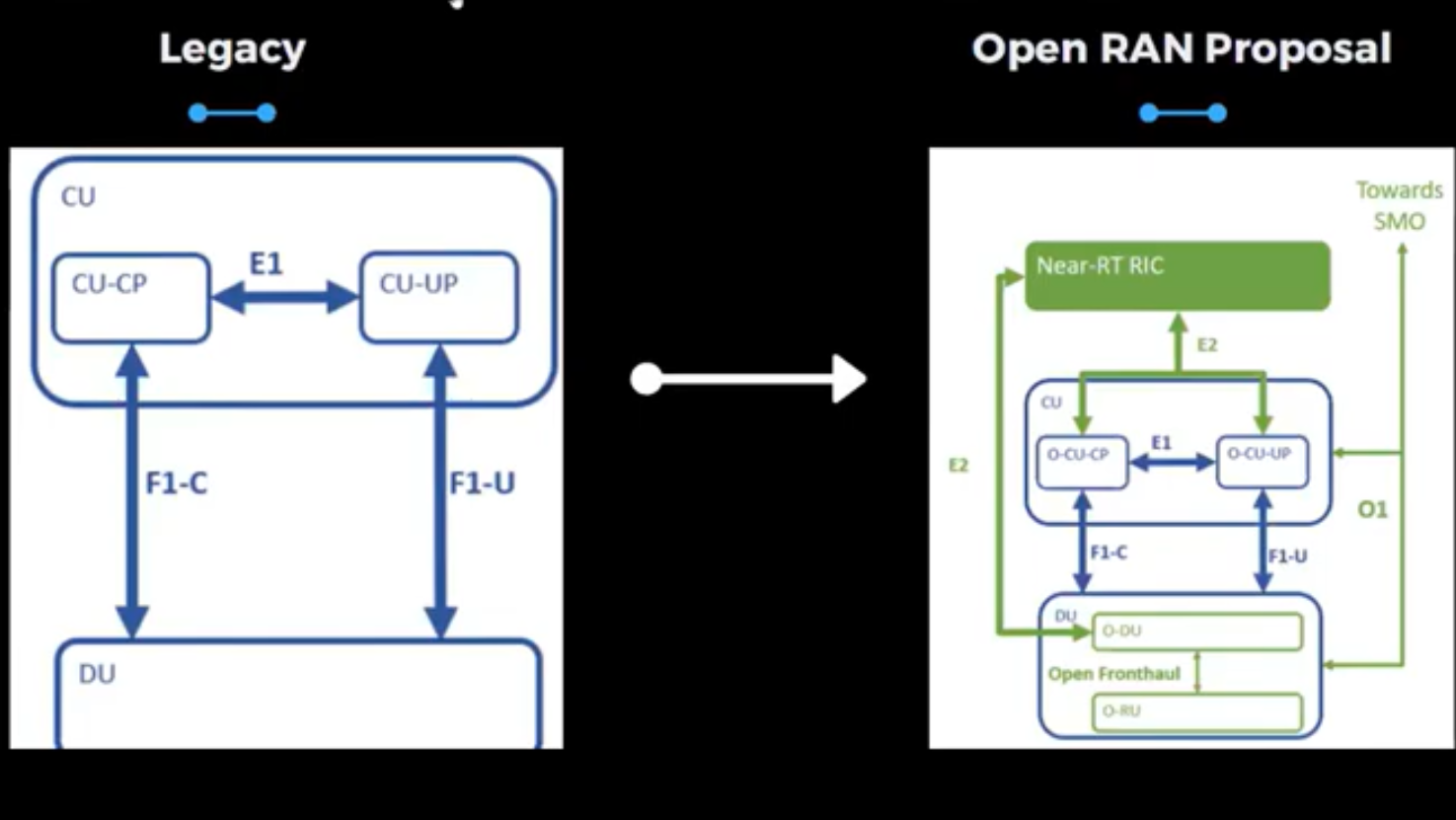
The Different Between Legacy RAN and OpenRAN
Thu, 22 Jul 2021 22:34:59, sysadmin, [category: openran-community]
Webinar 1st | OpenRAN Series Part 1|February 26th 2021, Speaker 1: Mr. Yudhi Rahadian – TechBros, Germany.
The picture on the left is a Legacy RAN that carries 5G technology and the picture on the right is an Open RAN Proposal.
A Brief Outline
- Introducing OpenRAN and Benefits of OpenRAN
- OpenRAN and Systems Integration
- AI-Enabled RAN and OpenRAN Interfaces Related
- Different Between Legacy RAN and OpenRAN
What are the Main Benefits of OpenRAN?
OpenRAN was found to reduce Opex and Capex from OpenRAN Network and expected OpenRAN technology can facilitate RnD synergy between different or multi-vendors. Vendors become more competitive and make vendors more dynamic. In addition, OpenRAN uses open source technologies such as Linux Red Hat and Wind River whose devices use White Box so that development is faster and can stimulate new innovations through the OpenRAN ecosystem later. Then, OpenRAN adopts Cloud Native technology where we know that scaling up will be more flexible and reliable in terms of availability compared to using scaling up by design. In terms of reducing Opex, because every layer of OpenRAN’s architecture is embedded with AI technology that can take advantage of new systems automatically and can also automate every function of network operations.
OpenRAN technology can improve the efficiency and effectiveness of the network and performance because the performance of each network resource is always monitored continuously and uses real-time closed-loop technology without any intervention from the operator or from the operator. human intervention, so that it more automatically reduces errors and can improve network conditions whose performance is in accordance with the end-user experience.
In OpenRAN itself, there are two technologies used, namely non-real-time RIC and near real-time RIC, both of which can be combined automatically and controlled based on the use case of each customer. Because OpenRAN technology adopts Cloud Native technology so that it can upgrade and upgrade the network without interruption and even zero fault tolerance. For example, if we want to increase the capacity to upgrade or even add hardware components, it will not disturb the existing service.
OpenRAN and System Integration
OpenRAN works with multiple vendors to certify such mix-and-match solutions. With OpenRAN, there will be many business opportunities available, especially on the RAN Network. Because OpenRAN carries White Box technology and collaboration between vendors, business opportunities are wide open, especially to become a system integrator for testing and also for testing, validating interoperability between vendors, and validating use cases where the system integrator can become an OpenRAN solution appraiser and bring innovation on the technology side. to market faster.
System integrators can drive interoperability testing and validation. They can help manage integration costs and bring new innovations to market quicker. The system integrator here is not only specialized in the telco field, but also in the vertical use cases such as private networks, data science, AI, use cases such as computer vision, and others that do require low latency as their technology pre-requirement. So, it can be said that OpenRAN is connecting the doors of existing technology.
Al-enabled RAN and OpenRAN Interface
What is the relationship between OpenRAN and AI-enabled RAN? As mentioned earlier, OpenRAN adopts AI technology with a RIC (Radio Intelligence Controller) system and its objective is to adapt existing RAN functionality by optimizing existing resources or new services. Examples are White Box Hardware and Traffic Steering. Whitebox hardware means that we can use COTS or Common Official tools which we can develop our own OpenRAN technology from OEM (Original Equipment Manufacturer) who already have a portfolio with OpenRAN technology whose object is to reduce expenditure costs because it can be adjusted from existing design references. And can reduce the overall industry supply chain costs.
This is expected to attract interest from SMEs or start-ups who are really interested in developing OpenRAN technology. Then, Traffic Steering is an evolution of Mobile Load Balancing which has been used to optimize traffic distribution based on the desired objective. As technology develops, even with 5G, the complexity of the network becomes even higher. When legacy RAN controls traffic optimization, it will require a lot of intervention, which is arguably inefficient and ineffective because the feedback after optimization will also take a long time, so it’s not real-time.
Even in terms of RRM (Radio Resource Management), the features of the network are more cell-centric, so there are several cell areas with different challenges. When the optimization is done, the ones that will be affected are all the UIs in that cell. In OpenRAN technology itself, it prioritizes UI-centric, where every optimization is focused on the user experience.
This way we are more agile and flexible in terms of Traffic Steering because it uses AI technology and early adaptable errors can be resolved faster. So, this UI-centric scenario will be more useful for vertical use cases or industrial use cases, where each scenario and objective of the use case will be automatically conditioned and optimized to be more proactive and smarter. OpenRAN solutions can apply data science leveraging AI/ML technologies to significantly improve performance and operation automation.




